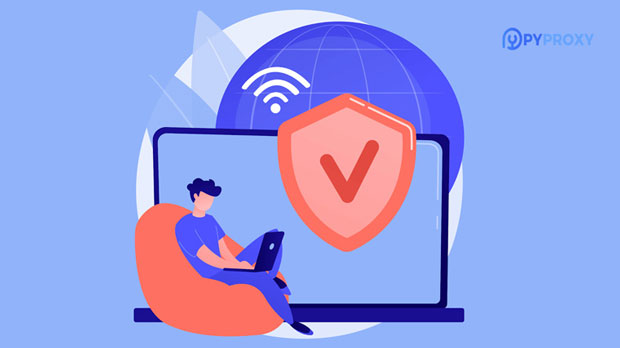When it comes to internet speed and privacy, socks5 proxies are often hailed as a reliable solution. But just how fast is a high-speed socks5 proxy? To answer this question, we need to take a closer look at what makes SOCKS5 stand out and perform speed tests across various conditions. In this article, we'll analyze the different factors that affect the speed of SOCKS5 proxies and compare them with other types of proxies. By the end of this article, you'll have a clear understanding of how fast SOCKS5 proxies can be in real-world scenarios and how they measure up to your expectations for online activities such as browsing, streaming, and gaming.Understanding SOCKS5 Proxy: What Sets It Apart?Before diving into the speed tests, it’s important to understand what a SOCKS5 proxy is and how it differs from other types of proxies. SOCKS5 is the latest version of the SOCKS (Socket Secure) protocol, designed to route internet traffic through an intermediary server, thereby masking your IP address. Unlike other proxies, such as HTTP or HTTPS proxies, SOCKS5 does not modify or filter traffic, making it more flexible and capable of handling a wider range of traffic types, including web browsing, email, and even gaming or P2P sharing.One of the main advantages of SOCKS5 is its speed. This is because SOCKS5 proxies don’t alter the data packets they route, minimizing overhead and latency compared to other proxies that inspect or modify your data. However, various factors influence the actual speed you experience when using a high-speed SOCKS5 proxy. Let’s break down these factors for a clearer understanding.Factors Affecting the Speed of SOCKS5 Proxies1. Server Location and DistanceThe proximity of the SOCKS5 server to your physical location plays a significant role in how fast your internet connection will be. A server located far away will introduce latency, while a server near you will minimize delays. Therefore, high-speed SOCKS5 proxies typically rely on a network of strategically placed servers around the world to provide optimal speed.2. Network Congestion and Server LoadJust like any network service, SOCKS5 proxies can experience slowdowns if the server is overloaded. When too many users are connected to a single server, the available bandwidth is shared, resulting in slower speeds for each user. This highlights the importance of choosing a proxy service with high-quality infrastructure and sufficient resources to handle user demand.3. ISP Throttling and Bandwidth LimitsInternet Service Providers (ISPs) may throttle your bandwidth, especially when they detect high data consumption, such as during video streaming or gaming. A high-speed SOCKS5 proxy can bypass these restrictions, but if your ISP imposes severe throttling, even the fastest proxy may not overcome these limitations.4. Encryption OverheadSome SOCKS5 proxies come with optional encryption, which adds an extra layer of security to your connection. However, encryption requires additional processing power, which can reduce the overall speed of your internet connection. If speed is your top priority and security is less of a concern, you may choose a SOCKS5 proxy without encryption to maximize performance.5. Quality of the Proxy ProviderNot all SOCKS5 proxies are created equal. The quality of the proxy provider plays a crucial role in determining speed. Some providers use high-performance hardware and offer well-maintained servers, while others may offer lower-quality proxies with slower speeds. A reliable proxy provider will have a robust network infrastructure, regularly updated software, and high uptime, all contributing to faster speeds.Testing SOCKS5 Proxy SpeedsTo better understand how fast a high-speed SOCKS5 proxy can be, let’s take a look at the results from some real-world speed tests. These tests will compare SOCKS5 proxy speeds with other types of proxies (HTTP, HTTPS, and VPNs) and measure performance across different internet activities.1. Basic Browsing SpeedWhen conducting basic browsing tests using SOCKS5 proxies, the results are typically impressive. Since SOCKS5 proxies don’t interfere with your data packets or modify them, users generally experience only a slight decrease in speed compared to a direct connection. The speed drop usually ranges from 0% to 10%, which is acceptable for everyday browsing. However, this could vary depending on server load, location, and distance from the user.2. Streaming and Video QualityHigh-speed SOCKS5 proxies are particularly beneficial when it comes to streaming content. Whether you're watching HD videos or live streams, SOCKS5 proxies can provide a fast, smooth experience with minimal buffering. When compared to VPNs, SOCKS5 proxies often deliver faster speeds for streaming, as VPNs typically involve higher overhead due to their encryption methods.3. Online GamingFor gamers, a high-speed SOCKS5 proxy can make a difference in reducing lag and improving overall game performance. The low latency of SOCKS5 proxies ensures that game packets are routed quickly, which is crucial for real-time games. In comparison to VPNs, SOCKS5 proxies usually provide lower latency, making them a better choice for competitive gaming.4. File Downloads and P2P SharingSOCKS5 proxies are also suitable for file downloads and peer-to-peer (P2P) sharing. Since SOCKS5 proxies don’t modify or filter traffic, they provide fast and efficient routing for large file transfers. Depending on the server load and the bandwidth limitations of your ISP, download speeds may experience a slight reduction but remain significantly higher than with other proxy types or VPNs.Comparing SOCKS5 to Other Proxy TypesTo put things in perspective, let’s compare the speeds of SOCKS5 proxies with other common types of proxies and VPNs:- HTTP/HTTPS Proxies: These proxies operate at a higher layer of the OSI model and are more likely to inspect and modify traffic. As a result, they tend to be slower than SOCKS5 proxies for most activities, especially when handling complex traffic like streaming or gaming.- VPNs: While VPNs offer superior encryption and privacy, they come with more overhead, which often results in slower speeds compared to SOCKS5 proxies. VPNs are ideal for securing sensitive data, but if speed is a priority, SOCKS5 proxies tend to outperform them in real-world usage.Conclusion: Is High-Speed SOCKS5 Proxy Worth It?After testing and analyzing the factors that impact the speed of SOCKS5 proxies, it’s clear that they offer excellent performance for a wide range of online activities. Whether you’re browsing the web, streaming videos, gaming, or sharing files, SOCKS5 proxies provide high-speed connectivity with minimal delays. However, speed can be affected by factors such as server load, encryption, and ISP restrictions. It’s important to choose a high-quality SOCKS5 proxy service with reliable infrastructure to get the best performance.In conclusion, if you're looking for a fast, reliable, and flexible proxy solution that doesn’t compromise your online experience, a high-speed SOCKS5 proxy is an excellent choice. Just be sure to consider your specific needs and test different providers to find the best fit for your requirements.---This comprehensive analysis provides a solid understanding of how fast a high-speed SOCKS5 proxy can be, offering valuable insights for users considering this option for their online privacy and performance needs.
Jan 08, 2025






















































